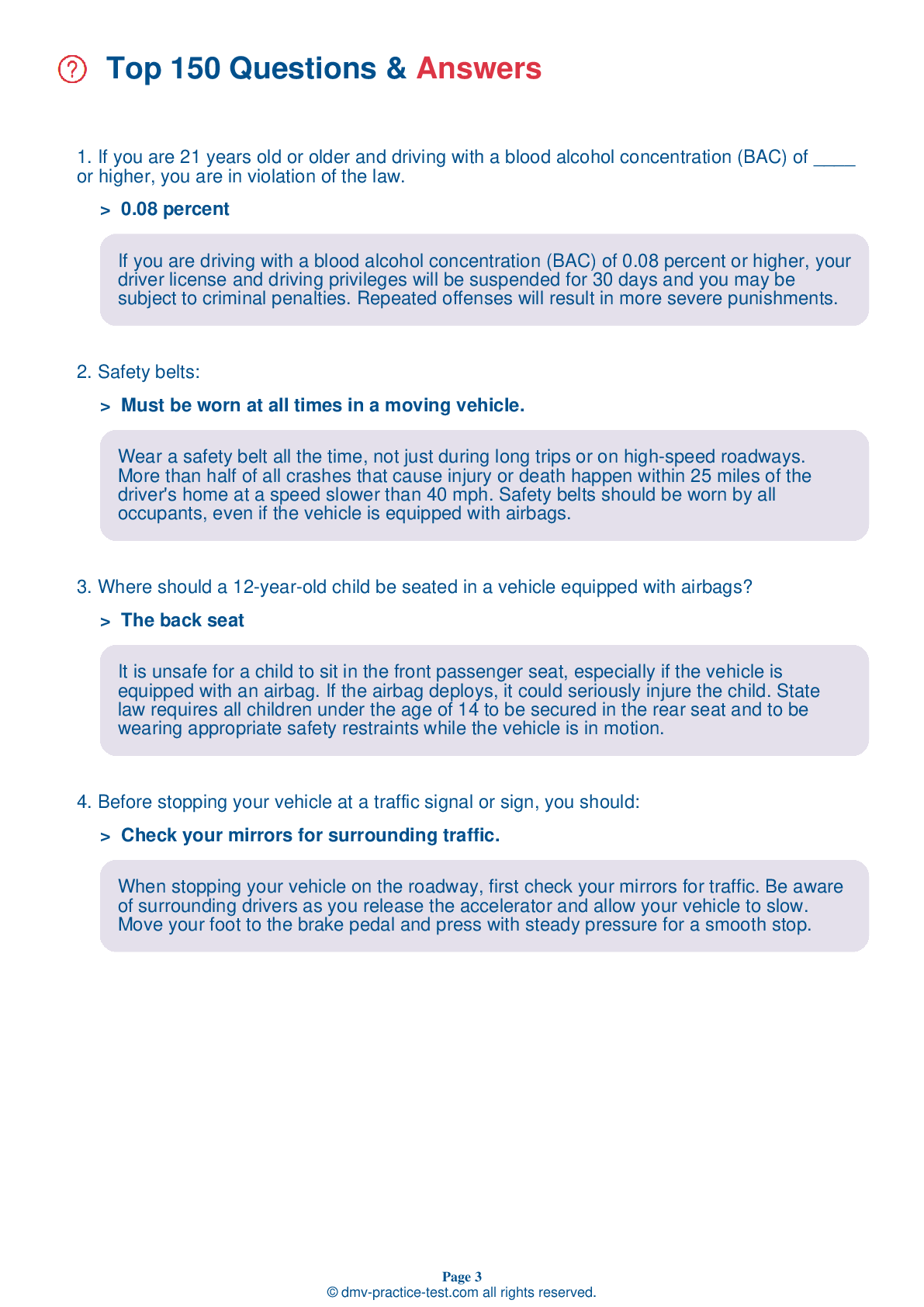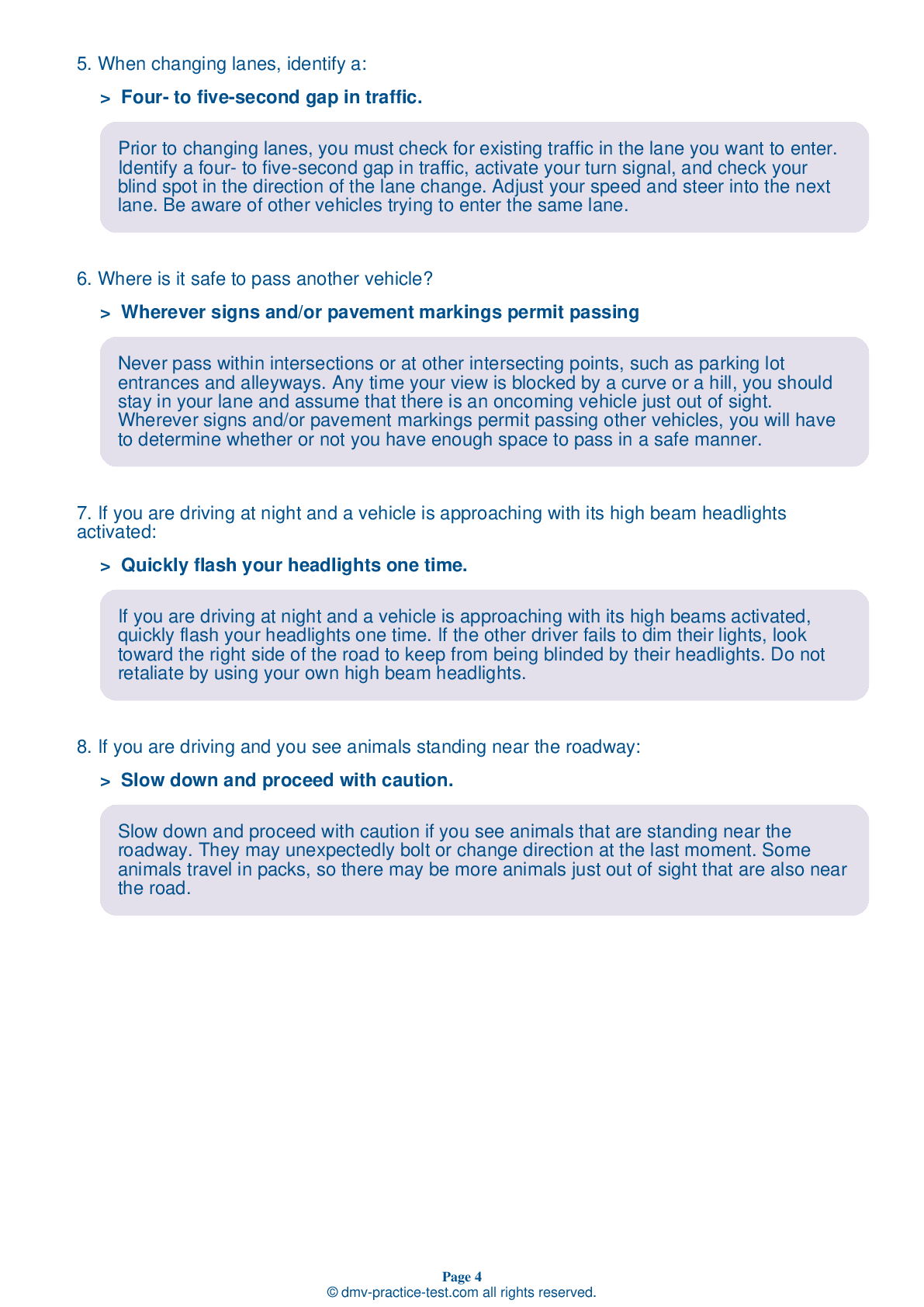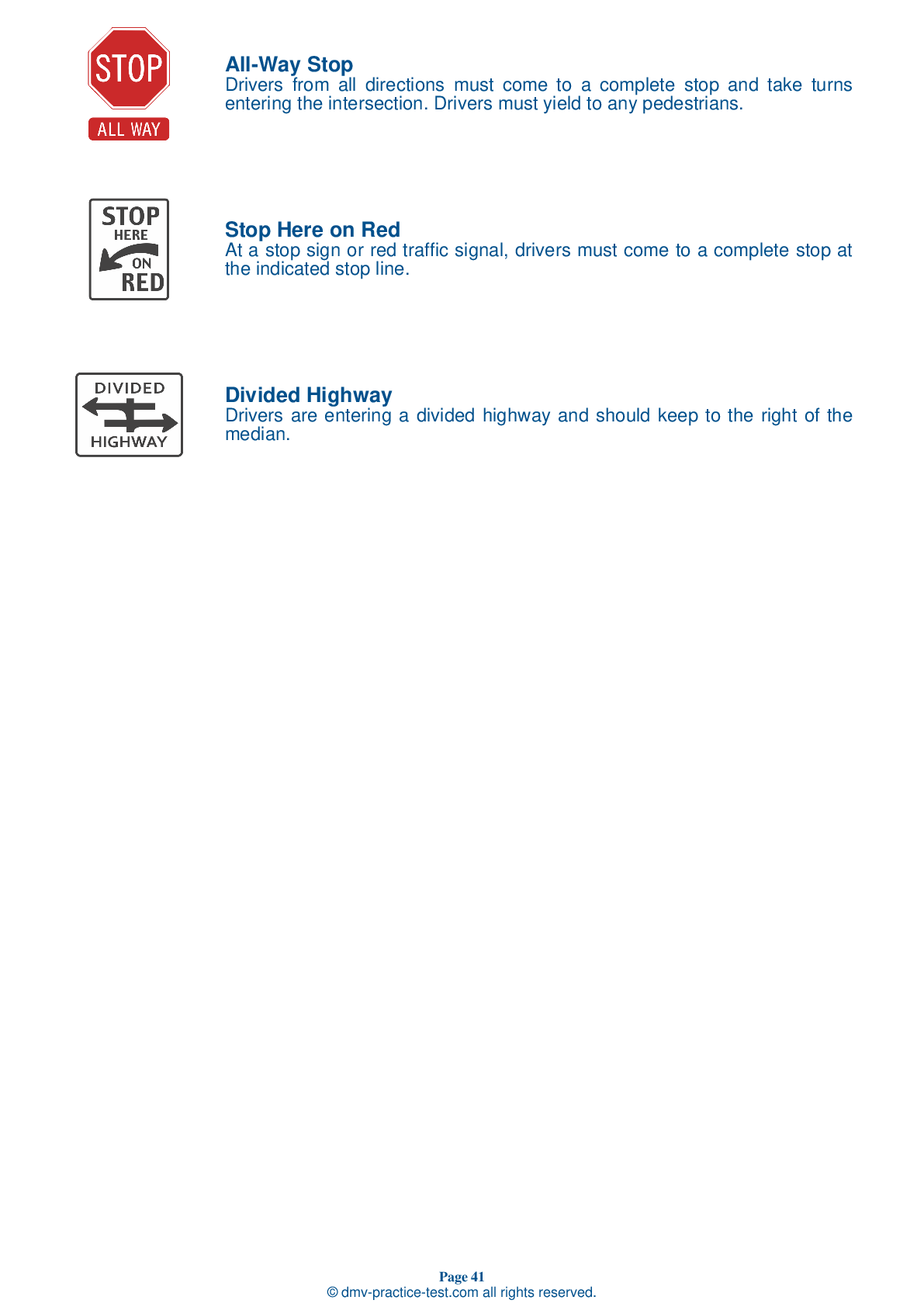FREE Kansas DMV Practice Test #2 Page 2 of 3
In Kansas, the DMV practise tests have been revised for January 2025. It includes questions based on the Kansas Driver Handbook's most essential traffic signals and regulations for 2025. Use actual questions that are very similar (often identical!) to the DMV driving permit test and driver's licence exam to study for the DMV driving permit test and driver's licence exam.
On the practise exam, each question gets a tip and explanation to help you remember the concepts. The written component of the official Kansas DMV test will include questions about traffic rules, traffic signs, and driving statutes, as well as information from the Driver Handbook.
To obtain a passing grade, you must correctly answer 20 of the 25 questions. Take our DMV practise exam to help you prepare for your Kansas instruction permit or driver's licence.
The DMV exam is available in several languages.
Using any kind of testing assistance will result in an automatic fail, and the DMV may take additional action against your driver's licence, so stay away from it.
9 . This road sign means:
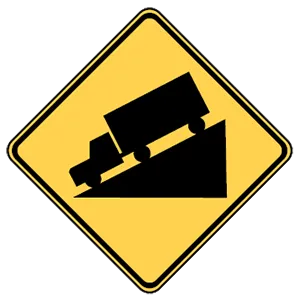
Warning signs provide notice to road users of a situation that might not be readily apparent and are usually yellow with black markings. This sign warns drivers of an upcoming steep hill. Drivers should adjust their speed accordingly to avoid collisions and brake damage.
10 . If you miss your exit on the freeway, you should not:
If you miss your turn or exit, do not back up in the travel lane or on the shoulder. Continue to drive to the next exit or crossroad. Drivers do not expect a vehicle to be backing toward them on the roadway and doing so will likely cause a collision.
11 . Which of the following is a dangerous habit when driving in work zones?
When driving in a work zone, adjust your speed for the traffic conditions and don't follow other vehicles too closely. Be attentive to workers and machines in the work zone.
12 . At a school crossing sign, you should:
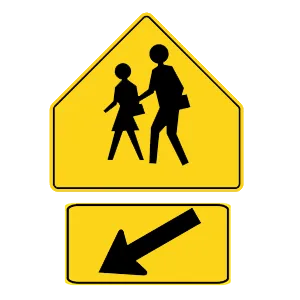
Pentagonal signs mean you are approaching a school zone and/or school crossing. When you see these signs, be alert and prepare to stop.
13 . This sign means:
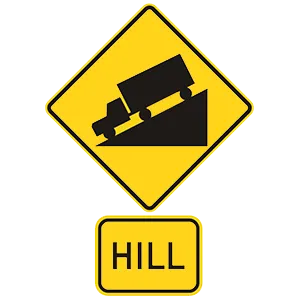
Warning signs are usually yellow with black markings. They alert you to conditions that are immediately ahead. This sign indicates that there is a steep hill ahead. Slow down and be ready to shift to a lower gear to control your speed and protect your brakes from damage.
14 . Trucks' blind spots are:
A truck's blind spots are much larger than a smaller car’s blind spots. The driver cannot see your car behind their vehicle and you can't see what’s happening in traffic ahead if you're driving too closely behind the truck. Whether you are driving behind or to the side of the truck, if you can’t see the driver’s face in their side view mirror, then they can’t see you.
15 . The golden rule of driving is to:
The golden rule of driving is to treat other drivers the way you want to be treated. Obey traffic laws, drive responsibly, and avoid taking unnecessary risks that may put you and others in danger.
16 . When a school bus is stopped on the road ahead to load or unload children, you must:
When a school bus is stopped on the road ahead with its lights flashing and its stop arm extended, you must come to a complete stop and wait to proceed until the lights have stopped flashing and the stop arm is withdrawn. Even after the bus begins to move again, do not proceed until you are sure there are no children crossing the road ahead of you.
Need Car Insurance? No problem!
Compare the best rates in Kansas and find a personalized policy that meets your needs.
1. Are You Currently insured ?
2. Married ?
3. Do you own your Home?
4. Do you have more than 1 car ?
5. Have you or a Family Member Honorably Served in U.S. Military ?
6. Your Name
7. Age
8. Zip code
IMPORTANT REMINDER:Auto Insurance is Mandatory to drive in Kansas. Get covered before you hit the road to avoid any fines.
Ranked by best match

